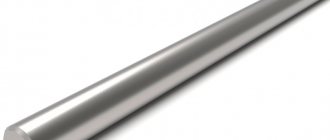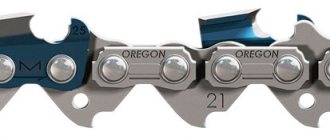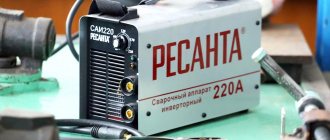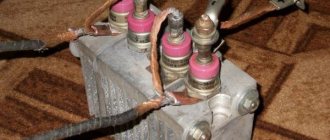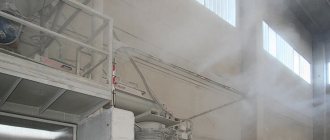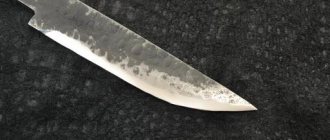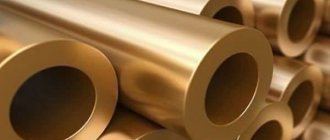The strength of elements in particularly critical steel structures largely depends on the condition of the nodes. The surface of the parts plays an important role. To give it the necessary hardness, durability or viscosity, heat treatment operations are carried out. The surface of parts is hardened using various methods. One of them is hardening with high frequency currents, that is, HDTV. It is one of the most common and very productive methods during large-scale production of various structural elements.
Such heat treatment is applied both to entire parts and to individual sections. In this case, the goal is to achieve certain levels of strength, thereby increasing service life and performance.
The technology is used to strengthen components of technological equipment and transport, as well as for hardening various tools.
The essence of technology
High-frequency hardening is an improvement in the strength characteristics of a part due to the ability of an electric current (with variable amplitude) to penetrate the surface of the part, subjecting it to heating. The penetration depth due to the magnetic field can be different. Simultaneously with surface heating and hardening, the core of the assembly may not be heated at all or may only slightly increase its temperature. The surface layer of the workpiece forms the required thickness, sufficient for the passage of electric current. This layer represents the depth of penetration of the electric current.
Experiments have proven that increasing the frequency of the current helps to reduce the penetration depth . This fact opens up opportunities for regulation and production of parts with a minimal hardened layer.
Heat treatment of HDTV is carried out in special installations - generators, multipliers, frequency converters, which allow adjustment in the required range. In addition to the frequency characteristics, the final hardening is influenced by the dimensions and shape of the part, the material of manufacture and the inductor used.
The following pattern has also been revealed - the smaller the product and the simpler its shape, the better the hardening process. This also reduces the overall energy consumption of the installation.
The inductor is copper. There are often additional holes on the inner surface designed to supply water during cooling. In this case, the process is accompanied by primary heating and subsequent cooling without current supply. The inductor configurations are different. The selected device directly depends on the workpiece being processed. Some devices do not have holes. In such a situation, the part is cooled in a special quenching tank.
The main requirement for the high-frequency hardening process is to maintain a constant gap between the inductor and the product. When maintaining a given interval, the quality of hardening becomes the highest.
Hardening can be done in one of the following ways::
- Continuous-sequential: the part is stationary, and the inductor moves along its axis.
- Simultaneous: the product moves, and the inductor moves vice versa.
- Sequential: different parts are processed one after the other.
Introduction
The final technological operation in the manufacture of steel gear parts is hardening with high frequency currents (HFC).
In mechanical engineering, it is customary to call a small gear a gear, and a large one is more often called the “wheel” of a gear. The most important parameters of gears are module, pitch, tooth height, number of teeth and lug circle diameter [1]. Gears with a module greater than 6 mm are processed in an induction installation; the resulting hardened layer depth is approximately 1.6 mm.
In a single-turn HDTV inductor with a concentrator, surface hardening of the tooth is carried out, the core of the tooth remains “raw” [2].
HDTV induction installations of the “Petra-0501” type are also used with hardening in a ring inductor.
Surface hardening of gears with a small module, less than 6 mm, is carried out in a ring inductor with a large number of turns.
Features of the induction installation
The installation for high-frequency hardening is a high-frequency generator together with an inductor. The workpiece is located both in the inductor itself and next to it. It consists of a coil on which a copper tube is wound.
An alternating electric current passing through an inductor creates an electromagnetic field that penetrates the workpiece. It provokes the development of eddy currents (Foucault currents), which pass into the structure of the part and increase its temperature.
The main feature of the technology is the penetration of eddy current into the surface structure of the metal.
Increasing the frequency opens up the possibility of concentrating heat on a small area of the part. This increases the rate of temperature rise and can reach up to 100 – 200 degrees/sec. The degree of hardness increases to 4 units, which is excluded during volumetric hardening.
Features of operating induction equipment
HDTV installations require constant care and qualified maintenance. Don't trust suppliers who tell you that HDTV installations never break down. This can happen more than once during the entire period of operation, which, with proper maintenance, can last up to 10 years or more. Intensive operation in a workshop with air contaminated with metal vapors, oils, acids and dust is possible for 4–6 years. During this time, the equipment should pay for itself many times over. According to reviews from most of our clients, induction equipment pays for itself in a maximum of six months.
Suppliers selling “Eternal equipment of European quality at a bargain price” are deceiving you. With these words, you should hear the following: “These are garage-assembled HDTV installations and we have no one to repair them!”
Chinese manufacturers do not repair induction equipment in Russia and the CIS. The equipment must be serviced and repaired by the Russian supplier.
Induction heating - characteristics
The degree of induction heating depends on three parameters - specific power, heating time, frequency of electric current. Power determines the time spent heating the part. Accordingly, with a larger value, less time is spent.
The heating time is characterized by the total volume of heat expended and the temperature developed. Frequency, as mentioned above, determines the depth of penetration of currents and the hardened layer formed. These characteristics have an inverse relationship. As the frequency increases, the volumetric mass of the heated metal decreases.
It is these 3 parameters that allow you to adjust the degree of hardness and layer depth, as well as the heating volume, over a wide range.
Practice shows that the characteristics of the generator set (voltage, power and current values), as well as the heating time, are monitored. The degree of heating of the part can be controlled using a pyrometer. However, in general, continuous temperature monitoring is not required because There are optimal HDTV heating modes that ensure stable quality. The appropriate mode is selected taking into account the changed electrical characteristics.
After hardening, the product is sent to the laboratory for testing. The hardness, structure, depth and plane of the distributed hardening layer are studied.
Surface hardening of HDTV is accompanied by greater heating compared to the conventional process. This is explained as follows. First of all, a high rate of temperature increase contributes to an increase in critical points. Secondly, it is necessary to ensure the completion of the transformation of pearlite into austenite in a short time.
High-frequency hardening, in comparison with the conventional process, is accompanied by higher heating. However, the metal does not overheat. This is explained by the fact that granular elements in the steel structure do not have time to grow in a minimum time. In addition, volumetric hardening has a lower strength of up to 2-3 units. After high-frequency hardening, the part has greater wear resistance and hardness.
Everything for melting and hardening of metals using high-frequency frequencies, crucible and muffle furnaces (Aliexpress)
A selection of equipment for melting and hardening metals at home using induction heating units, crucible and muffle furnaces. The selection will also include useful accessories.
The topic is interesting and will be useful to a wide range of specialists and amateurs, modelers and hobbyists. With the help of such equipment, you can completely achieve your goal: from an idea to its implementation in metal.
A discount promo code is available: lexus1111all300 - 300 rubles discount on orders over 2400 rubles from 10/28 to 11/30.
Compact mini-furnaces for heating, hardening and melting metals
Mini Crucible Furnace SmartMelt Mini Muffle Furnace SmartKiln Induction Melting Furnace
Recently, small-sized muffle and crucible furnaces operating from a household single-phase AC voltage ~220V have become popular. Consumption is relatively low - about 2 kW (like an electric kettle or iron). The maximum melting temperature is 1100…1300 °C; a special PID controller is installed to maintain the temperature. I pay special attention to SmartMelt and SmartKiln stoves - they are available in the Russian Federation, delivery is fast, instructions are in Russian.
As for master models for casting, you can make them yourself using FDM 3D printers or SLA UV 3D printers.
High-frequency induction heating (HFH) installations
Installing ZVS at 2000 W Installing ZVS at 2500 W Installing ZVS at 3000 W
Another traditional option for heating metals is induction heating units (HDVS, or in English: ZVS). They are an inductive circuit pumped with high high-frequency currents (50-100 Amperes). A workpiece for melting or heating is placed in the center of the coil. Suitable for hardening, for example, knife blanks. Due to the high power, the power circuit needs to be cooled, so make sure that the kit includes a liquid pump (or purchase separately). You will also need a powerful DC power source (24...48 V, 2-3 kW each). It’s better to take it as a set at once (more profitable). Such equipment may well become the start of your own business.
Vacuum injection molding machines
KayaCast Vacuum Casting Machine EasyCast Vacuum Casting Machine
For casting on a small scale, for jewelry and souvenirs, it is better to take a separate or combined installation for vacuum casting, and specifically: a vibration machine with a vacuum pump. Optionally, a crucible furnace can be built into it. Yes, to work with small portions of metals, it is better to purchase various crucibles and heat-resistant bowls, tongs, protective gloves and a mask.
Accessories for stoves
Graphite crucible Ceramic crucible
A ceramic crucible made of quartz heat-resistant glass is more interesting precisely because of its wear-resistant qualities. But a graphite crucible is cheaper, but wears out more with frequent melting. In any case, you will need a number of similar accessories of various sizes and shapes. When choosing, pay attention to the presence of a “spout” for pouring liquid metal. Power supplies for HDTV can be viewed in this collection.
Thus, at low cost, you can assemble equipment for self-production in small batches, for example, souvenirs. This could well be the start of your own business or a serious help in your hobby. The prices are relatively low, some of the equipment is available in Russia, some is sold as a set and is ready for use immediately.
You can find other selections of equipment, as well as tests and reviews of gadgets, using the links below and in my profile.
How is the temperature selected?
Compliance with the technology must be accompanied by the correct choice of temperature range. Basically, everything will depend on the metal being processed.
Steel is classified into several types:
- Hypoeutectoid – carbon content up to 0.8%;
- Hypereutectoid – more than 0.8%.
Metal containing carbon is not subject to hardening, as the result is very low hardness.
Hypoeutectoid steel is heated to just above that required to convert pearlite and ferrite to austenite. Range from 800 to 850 degrees. After this, the part is cooled at high speed. After rapid cooling, austenite is transformed into martensite, which has high hardness and strength. With a short holding time, austenite with a fine-grained structure, as well as fine-needle martensite, is obtained. Steel gains high hardness and low brittleness.
Hypereutectoid steel heats up less. Range from 750 to 800 degrees. In this case, incomplete hardening is performed. This is explained by the fact that such a temperature makes it possible to retain in the structure a certain volume of cementite, which has a higher hardness compared to martensite. Upon rapid cooling, austenite is transformed into martensite. Cementite is preserved by small inclusions. The zone also retains carbon that has not fully dissolved and has turned into solid carbide.
Methods of hardening HDTV
Based on the heating process, a distinction is made between induction continuous-sequential hardening and simultaneous hardening.
Continuous-sequential hardening is used for long parts of constant cross-section (shafts, axles, flat surfaces of long products). The heated part moves in the inductor. The area of the part that is at a certain moment in the zone of influence of the inductor is heated to the quenching temperature. At the exit from the inductor, the section enters the spray cooling zone. The disadvantage of this heating method is the low productivity of the process. To increase the thickness of the hardened layer, it is necessary to increase the heating duration by reducing the speed of movement of the part in the inductor. Simultaneous hardening involves simultaneous heating of the entire surface to be hardened.
Advantages of technology
- Controlling modes;
- Replacing alloy steel with carbon steel;
- Uniform heating process of the product;
- The ability not to heat the entire part completely. Reduced energy consumption;
- High resulting strength of the processed workpiece;
- There is no oxidation process, no carbon is burned;
- No microcracks;
- There are no warped points;
- Heating and hardening of certain areas of products;
- Reducing the time spent on the procedure;
- Introduction of high-frequency installations into production lines during the manufacture of parts.
Range of high-frequency HDTV installations on transistor IGBT modules
| Parameter/designation | HF-15A | HF-15AV | HF-25A | HF-25AV | HF-40AV | HF-60AV | HF-80AV | HF-100AV | HF-120AV | HF-160AV |
| Power consumption, kVA | 15 | 15 | 25 | 25 | 40 | 60 | 80 | 100 | 120 | 160 |
| Operating frequency range, kHz | 30-80 | 30-80 | 30-80 | 30-80 | 30-60 | 30-60 | 30-60 | 20-50 | 20-50 | 20-50 |
| Supply voltage, V | 220 | 220 | 380 | 380 | 380 | 380 | 380 | 380 | 380 | 380 |
| Number of phases, pcs. | 1 | 1 | 3 | 3 | 3 | 3 | 3 | 3 | 3 | 3 |
| Maximum current of one phase, A | 25 | 25 | 25 | 25 | 45 | 65 | 120 | 150 | 180 | 240 |
| Efficiency, % | 90 | 90 | 90 | 90 | 90 | 90 | 90 | 90 | 90 | 90 |
| Timer, sec | 99 | 99 | 99 | 99 | 99 | 99 | 99 | 99 | 99 | 99 |
| Equipment weight, kg | 18 | 23 | 23 | 31 | 35+30 | 35+30 | 41+42 | 45+47 | 51+49 | 63+55 |
| Cooling system of HDTV installation | ||||||||||
| Water consumption, l/min max. | 5 | 5 | 8 | 8 | 10 | 12 | 12 | 14 | 14 | 16 |
| Water pressure, atm. | 2 | 2 | 2 | 2 | 2-3 | 2-3 | 2-3 | 2-3 | 2-3 | 2-3 |
| Pump power, kW | 0,3 | 0,3 | 0,4 | 0,4 | 0,5 | 0,5 | 0,7 | 0,8 | 1,0 | 1,2 |
Induction heating systems
Thus, an induction heating system consists, at a minimum, of a generator that converts mains power into the current necessary for operation of the installation, and an inductor that transmits energy for heating. As a rule, a resonant circuit is still needed to match the characteristics of the inductor and generator. To perform more complex tasks, a more complex system is required, including a hardening machine, a cooling system, etc.

